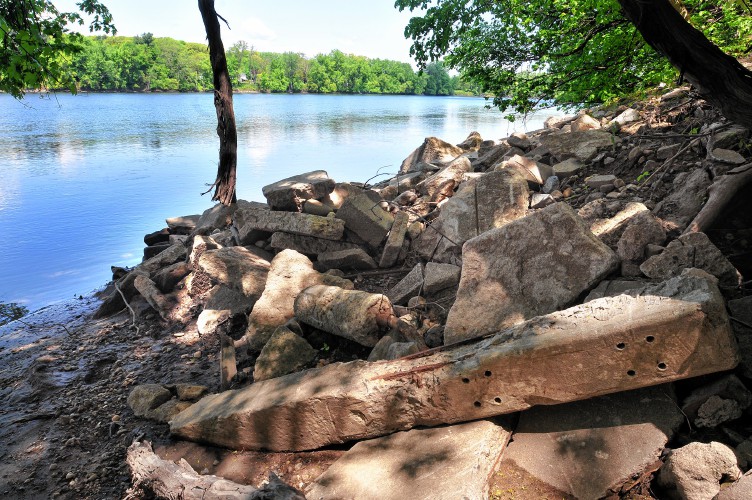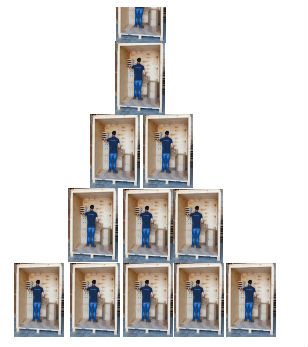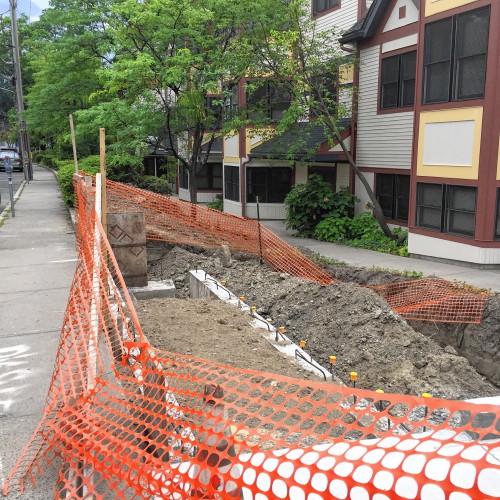More than 100 yards of industrial concrete waste along the Connecticut River along Route 47 in Hadley is going to be removed, thanks to an anonymous phone call.
Earlier this month, the Department of Environmental Protection (DEP) issued an enforcement order against general contractor Christopher J. Baj, of Hadley Concrete Service, alleging violations of the state’s solid waste, wetlands and waterways laws when debris — 2,860 cubic feet of concrete rubble, reinforcement bar, pipes, conduit and painted wood shards — from a worksite on Gothic Street in Northampton was found beside the river. The DEP is compelling him to hire a consultant to create cleanup and restoration plans at the site and remove the debris by Aug. 31.
Through his lawyer, Baj has denied the DEP’s charges and is appealing the decision. Maybe he’s right. During investigation, Gazette reporter Dan Crowley discovered that Meehan Concrete/Construction of Westhampton was supposed to receive the site waste. The company referred questions about the Gothic Street site to Hadley Concrete.
The state department says it was able to begin an investigation, which involved the Hadley Police Department in addition to DEP Police, because of a tip town officials received in March.
Western Mass is home to many beautiful natural spaces and it’s the duty of everyone to keep it that way. So, if you see an unauthorized dump — unfortunately, the area is home to many of those as well — report it by calling the DEP at 1-888-VIOLATE . All calls are confidential.
Illegal dumping in Springfield and Holyoke — often in abandoned parking lots and behind stores as well as in wooded areas — became so rampant that video cameras were installed at some of the most popular places for people to toss old furniture and other large pieces of garbage. Installed around 2014, the equipment regularly snags litterers in the act. In 2015, for example, seven people were issued $300 littering fines after being recorded in Springfield tossing trash. City officials have said the cameras seem to be deterring small- and large-scale littering, but it’ll take some time to be sure the trash isn’t being dumped elsewhere.

A large debris pile of broken pieces of concrete, which appear to be from a demolition, was recently found on the eastern shore of the Connecticut River off of River Road in North Hadley.
I applaud Springfield, Holyoke, and other communities that have invested in quashing illegal dumping — because there’s not a lot of money for environmental enforcement in the state. Massachusetts DEP gets $2.5 million for enforcement regardless of how much the agency takes in in fines, which is a lot more than $2.5 million.
According to Trinity Consultants, an auditing firm, the state can collect upwards of $7 million in fines in any given year. The $2.5 million enforcement spending cap was put in place for fiscal year 2013, two years after the DEP’s budget was slashed in response to the Great Recession. But funding for keeping the state clean had been on a decline even before then. The state’s budget for environmental protection, which includes the DEP, is 29 percent less than it was in 2001, according to a study by the Massachusetts Budget and Policy Center.
This, of course, has impacted inspections. Contaminated properties and waste and water sites are being inspected 24 percent less than in 2001, too, according to an article by the New England Center for Investigative Reporting.
This is probably why the Hadley dump site was allowed to grow to such egregious proportions.
Western Massachusetts is known for its lush landscape, and that’s a source of pride for many Bay State residents. It’s a big reason why some people still live in this state. But it needs to be protected.
When Gov. Baker struck $103,000 from the state budget from the DEP’s compliance funds, he made it all the more easy for unscrupulous people to trash our natural resources.
How in the world did 11 and a half large industrial shipping containers of concrete and rebar end up at the Connecticut River’s edge without someone stepping in sooner? Without proper funding for inspections, jerks will continue to trash this great state.
Contact Kristin Palpini at editor@valleyadvocate.com.
To give a sense of how much 2,860 cubic feet of construction waste actually is, we made this graphic. Each unit is a 250-cubic foot crate (with a man standing inside for a sense of scale). It would take 11 and a half of these boxes to contain all the waste the DEP found along the CT River in Hadley.




